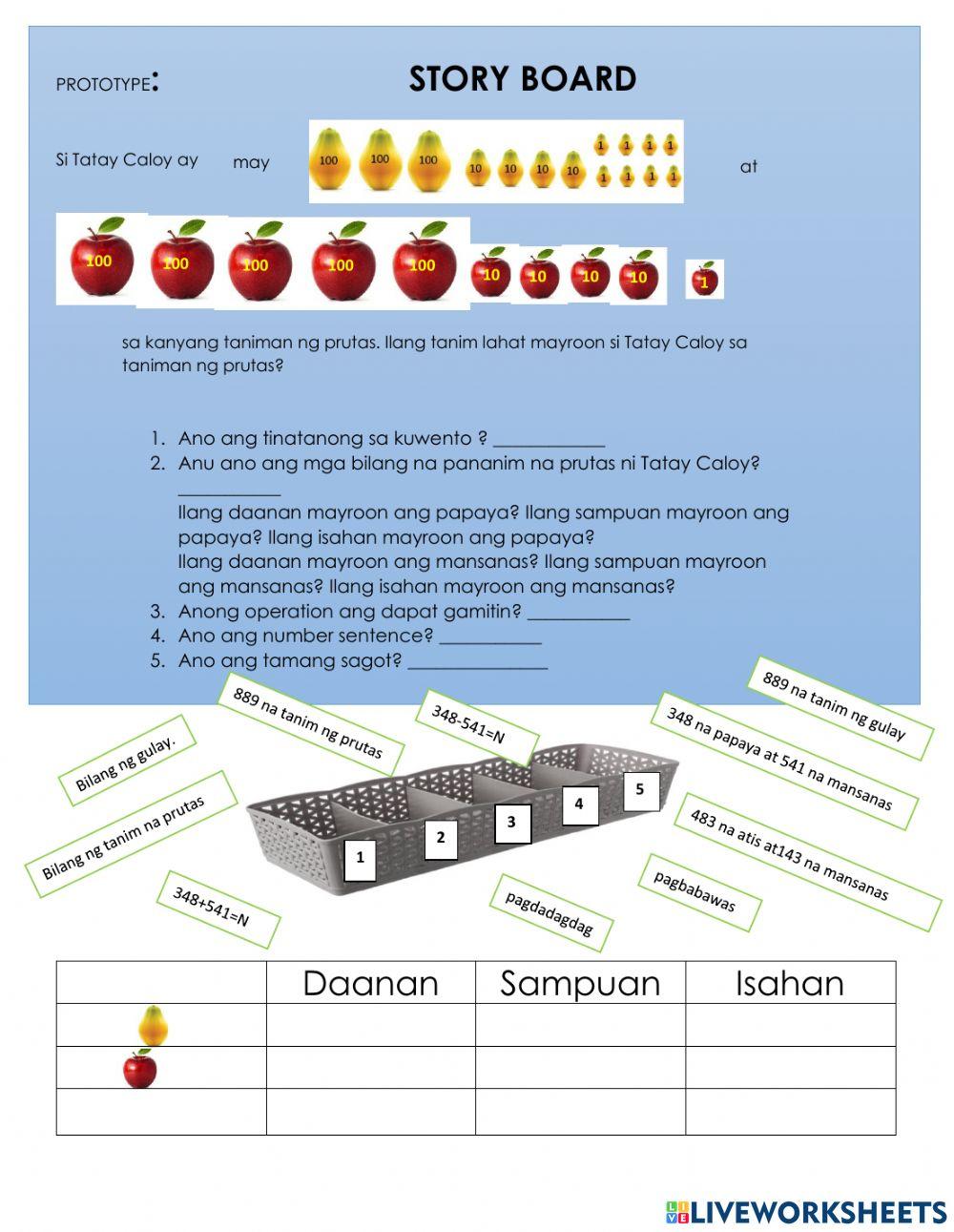
Pick a language and start learning!


Problem-Solving and Complaint Expressions in Tagalog

Language learning is not just about acquiring vocabulary and grammar, but also understanding how to communicate effectively in real-life situations. When learning Tagalog, one of the vital areas to master is the ability to express problems and complaints. These expressions can help you navigate through challenging situations and communicate your needs or concerns effectively.

Understanding Politeness in Tagalog
Tagalog, like many languages, places a strong emphasis on politeness, especially when addressing sensitive issues like complaints or problems. It is important to frame your sentences in a way that is respectful and considerate. The use of po and opo (polite affirmatives) can soften the delivery of your message and show respect to the person you are speaking to.
Expressing Problems in Tagalog
When you encounter a problem and need to describe it in Tagalog, you should be clear and concise. Here are some phrases that could help:
– May problema ako. (I have a problem.) – Hindi gumagana ang… (The… is not working.) – Nawawala ang aking… (I lost my…)
These expressions state the problem without assigning blame, which can be crucial in maintaining a harmonious interaction.
Asking for Help or Solutions
After stating the problem, it’s natural to proceed by asking for help or a solution. This can be done politely with these phrases:
– Pwede mo ba akong tulungan? (Can you help me?) – May alam ka bang pwedeng gawin dito? (Do you know what can be done about this?) – Anong dapat kong gawin? (What should I do?)
By asking questions, you engage the other person positively, giving them an opportunity to provide assistance or advice.
Expressing Complaints in Tagalog
Complaining in a language that is not your first can be daunting. However, knowing the right phrases can make the process smoother. When expressing a complaint in Tagalog, it’s beneficial to explain the situation and then state your dissatisfaction:
– Hindi ako masaya sa serbisyo. (I am not happy with the service.) – Ang tagal ng paghihintay ko. (I’ve been waiting too long.) – Ang mahal naman nito kumpara sa iba. (This is too expensive compared to others.)
These phrases clearly communicate dissatisfaction but are general enough to avoid sounding too harsh.
Requesting Specific Actions
Sometimes, simply expressing a complaint isn’t enough; you may need to request specific actions to resolve the issue. Here are some useful expressions:
– Pwede bang palitan ito? (Can this be replaced?) – Pwede bang ibalik ang pera ko? (Can I get a refund?) – Pwede bang ayusin ito agad? (Can this be fixed immediately?)
These requests are direct and to the point, which can be very effective in problem-solving situations.
Dealing with Responses
When you express a problem or complaint, be prepared to handle the response, whether it’s positive or negative. Here are some phrases that might be useful:
– Salamat sa iyong tulong. (Thank you for your help.) – Sana ay maayos ito agad. (I hope this will be resolved quickly.) – Hindi pa rin ito ayos. (It’s still not okay.)
Acknowledging the response shows that you are engaged in the conversation and helps to further dialogue, which might be necessary to fully resolve the issue.
Mastering problem-solving and complaint expressions in Tagalog not only enhances your language skills but also equips you to handle situations that require negotiation and diplomacy. Remember, the key to effective communication in such scenarios is politeness and clarity. By using the expressions shared in this article, you can approach difficulties with confidence and poise, paving the way for a more fruitful and stress-free experience in the Philippines or among Tagalog-speaking communities.
Learn a Language With AI 5x Faster

TalkPal is AI-powered language tutor. Learn 57+ languages 5x faster with revolutionary technology.
7+ Easy Tagalog For Resolving Disagreements
- , September 27, 2023

In the heart of Manila, nestled among its busy streets, you might find yourself in a bustling café. Here, the scent of fresh coffee is as intoxicating as the spirited conversations around you. Amid the hum of discussions, a tense disagreement between two locals captures your attention. Just as voices start to escalate, a calming Tagalog phrase is dropped, acting almost magically to diffuse the tension. This scene drives home an essential point: the power of learning Tagalog for resolving disagreements is undeniable. In a world where miscommunication can easily lead to conflict, mastering the nuances of Tagalog offers a unique tool for harmony.
Ever found yourself at a loss for words? Or, perhaps, unintentionally pouring gasoline on a fiery situation? Equip yourself with the rich tapestry of Tagalog, and you might just turn disagreements into opportunities. Opportunities to not only resolve issues but to forge deeper connections. So, let’s waltz through some pivotal Tagalog terms that can be your peacekeeping arsenal in heated moments.
What Is “Disagreement” In Tagalog?
Deep in the Filipino linguistic landscape, “disagreement” finds its voice in the word “pagtatalo.” But that’s just scratching the surface. Delve deeper into Tagalog, and you’ll discover a myriad of terms that convey the concept of disagreement, each with its own shade of meaning.
- Di-pagkakaunawaan – Misunderstanding
- Salungatan – Contradiction
- Di-pagkakasundo – Discord or not in harmony
- Bangayan – Clash or conflict
- Alitan – Dispute
Though they all hint at disagreement, each term has its unique nuance. Recognizing when and how to use them? That’s where true understanding begins. Dive deep, and you’ll not just speak Tagalog but feel its rhythm and flow, especially when navigating the choppy waters of disagreements. And who knows? The next time you’re in that Manila café, you might just be the one wielding the power of words to restore peace.

Easy Tagalog For Resolving Disagreements
In the midst of a disagreement, sometimes the simplest phrases can pave the way to understanding and reconciliation. Here are some easy Tagalog phrases, complete with English translations and contexts, that can help diffuse tension and promote understanding:
Pwede ba nating pag-usapan?
Translation: Can we talk about it?
Communication forms the bedrock of understanding. This phrase, by initiating an open conversation, emphasizes the importance of dialogue. It expresses a willingness to not just brush issues under the carpet but to face them head-on, fostering a deeper understanding between parties involved.
Naiintindihan kita.
Translation: I understand you.
Empathy can be a powerful tool in diffusing disagreements. By using this phrase, you’re telling the other person that you’re making an effort to stand in their shoes, to view the situation from their perspective, which can significantly reduce feelings of antagonism.
Pasensya ka na.
Translation: I’m sorry / Please forgive me.
A heartfelt apology can go a long way in mending fences. This phrase exhibits an acceptance of one’s role in the disagreement and shows vulnerability, which can pave the way for genuine reconciliation.
Ano ang iyong panig?
Translation: What’s your side?
Everyone wants to be heard, especially in conflicts. By asking for their side of the story, you’re showing respect for their viewpoint, emphasizing that their feelings and perspectives hold value.
Tara, kalma muna tayo.
Translation: Let’s calm down for a bit.
Emotions can often cloud judgment. This phrase serves as a gentle reminder to both parties to take a moment, breathe, and approach the situation with a clear mind, facilitating a more constructive conversation.
Maaari ba tayong maghanap ng solusyon?
Translation: Can we find a solution?
Instead of getting stuck in the problem, this phrase proactively shifts the conversation towards resolution. It highlights the importance of collaboration in finding common ground.
Salamat sa pagiging bukas.
Translation: Thank you for being open.
Appreciation can foster goodwill. Recognizing and thanking the other party for their openness and willingness to communicate strengthens the bond and promotes a more harmonious interaction.
Huwag natin itong palakihin.
Translation: Let’s not blow this out of proportion.
Not all disagreements warrant intense confrontations. This phrase gently reminds both sides to keep things in perspective, ensuring that minor issues don’t balloon into major conflicts.
Maaari ba tayong magkasundo?
Translation: Can we come to an agreement?
Direct and to the point, this phrase emphasizes the importance of mutual consensus. It invites collaboration, steering the conversation towards a place of shared understanding and agreement.

Body Language When Resolving Conflicts In The Philippines
The Philippines, with its rich cultural tapestry and communal values, places significant importance on non-verbal cues, especially when it comes to resolving conflicts. Recognizing and understanding these subtle body languages can be instrumental in navigating disagreements in a Filipino context. Let’s delve into some key body language gestures and their implications:
Eye Contact
Maintaining steady eye contact during discussions signifies respect and attentiveness. However, prolonged or forceful eye contact can be perceived as confrontational or challenging. It’s crucial to strike a balance.
Head Nods And Shakes
A nod often means agreement or understanding, while a shake usually indicates disagreement or confusion. These subtle cues can help gauge if the other person is following or resonates with what you’re saying.
Palms Open And Upward
This gesture indicates openness, honesty, and a willingness to communicate. It suggests that you’re approachable and willing to find common ground.
Folded Arms
While sometimes it can merely be a comfortable stance, folded arms can also be perceived as defensive or closed off. It might indicate resistance or discomfort regarding the ongoing discussion.
Smiles And Raised Eyebrows
A genuine smile, combined with slightly raised eyebrows, often signifies openness and amiability. In Filipino culture, a soft smile can also be a way to ease tension during a disagreement.

Avoiding Eye Contact
Deliberately avoiding eye contact, especially when being spoken to, can indicate discomfort, shame, or evasion. In many cases, it’s a sign of deference, especially when interacting with elders or figures of authority.
Physical Distance
Filipinos often communicate in close physical proximity, emphasizing camaraderie and kinship. If someone deliberately maintains a larger distance during a discussion, it might indicate a desire to emotionally or mentally distance themselves from the conflict.
A gentle pat on the back or touch on the arm can be a reassuring gesture in the Philippines. It signifies empathy, support, and a shared understanding.
Tilting Of The Head
A slight tilt of the head, especially when listening, denotes intrigue and interest in what the other person is saying. It’s a non-verbal way of urging the speaker to continue.
Learn Tagalog With Ling
Disagreements and conflicts are an inevitable part of human interactions, no matter the cultural backdrop. In the Philippines, with its unique blend of traditions and values, resolving disagreements requires not only a command of the Tagalog language but also an understanding of the subtle non-verbal cues that Filipinos employ. Engaging in a genuine, empathetic, and informed manner can make all the difference, bridging gaps and fostering harmonious relationships.
If you’re inspired to delve deeper into the intricacies of the Tagalog language, consider downloading the Ling app. Available on both the App Store and Play Store , it offers a comprehensive platform to learn Tagalog and connect more profoundly with Filipino culture. Remember, understanding a language is the first step to embracing its culture and its people. Happy learning!
Leave a Reply Cancel reply
Your email address will not be published. Required fields are marked *
Save my name, email, and website in this browser for the next time I comment.
Discover more

People also read

7+ Easy Ways To Say Happy Birthday in Serbian!

500 Common Serbian Phrases For Travel

How To Say Hello In Serbian: 9 Useful Ways To Say Hi

Currency In Serbia: Fascinating History And 5 Travel Tips

50+ Essential Gym Vocabulary In Serbian To Stay Fit

80+ Best Serbian Music Vocabulary For You To Practice
Southeast asia, east europe.
© 2024 Simya Solutions Ltd.
Mga Setting
Bilis ng boses, pagsasalin ng text, source text, mga resulta ng pagsasalin, pagsasalin ng dokumento, i-drag at i-drop.

Pagsasalin ng website
Maglagay ng URL
Pagsasalin ng larawan
Problem Solving (Tagalog)
Loading ad...
Cecilia R, Bernal
Problem Solving with pictures representation
- Google Classroom
- Microsoft Teams
- Download PDF

Tagalog Dictionary
Meaning of problem
n. 1. problem; 2. thesis; proposition [mat.]
Pinoy Dictionary 2010 - 2024 All Rights Reserved
Powered by Cyberspace.PH
Tagalog-Dictionary.com
Meaning of "problema", problema •, » synonyms and related words:.
- 1. something that is asked: tanong, katanungan, ang itinatanong
- 2. a problem: suliranin, problema
- 1. to ask in order to get information: magtanong, tanungin, itanong, mag-usisa, usisain
- 2. to doubt: mag-alinlangan, pag-alinlanganan
- 3. beyond question, without doubt: walang alinlangan, walang duda, hindi matatawaran
- 4. beside the question, off the subject: labas sa pinag-uusapan, wala sa pinag-uusapan, di pinag-uusapan, walang kaugnayan sa paksa
- 5. call in question, to challenge, object to: tutulan
- 6. in question sometimes means under discussion: pinaguusapan, nasa pagsasaalang-alang, isinasaalang-alang
- 1. a matter of doubt or difficulty: suliranin, problema
- 2. something to be worked out: problema, tanong
Improve your Filipino vocabulary
Articles & essays.
- Morong Majesty
- Balut Making
- Palawan's Little Saigon
- The Filipino and The Salacot
- Barong Tagalog
Filipino Food
- Fermented Rice
- In Praise of Suman Past
- Sisig na Sisig
- Tinapa - Smoked Fish
- Biscocho Pasuquin
- Panecillos de San Nicolas
Native Games
- Sungka | Sipa
- Agawan Base
- Tumbang Preso
- Chinese Garter
- Marbles (Holen)
- Hide and Seek (Taguan)
Spread the word
- Idioms / Mga Sawikain
- Proverbs / Mga Salawikain
- Essays / Stories
- Filipino Folk Songs
- Online Games
- Holloween All Souls Day Saints
- Christmas in the Philippines
- New Year's Eve in the Philippines
- Palm Sunday's Palaspas
- Filipino Legends
Festivals & Events
- Araquio Festival
- Ati-atihan Festival
- Giant Lantern Festival
- Hot Air Balloon
- Flores de Mayo - Flowers of May
- Mardi Gras The Philippine Style
Filipino Sites
- Buy and Sell Philippines
- Filipino Freelancers

Definition of " problema " word Copyright © 2003 - 2016 Tagalog English Dictionary | Manila Philippines. All rights reserved.

IMAGES
VIDEO
COMMENTS
Translation of "problem solving" into Tagalog. Sample translated sentence: "School has improved my problem-solving ability, whether in the classroom or elsewhere. ↔ "Dahil sa pag-aaral, naging mas mahusay akong lumutas ng mga problema, sa loob man o labas ng klase. The process of devising and implementing a strategy for finding a solution ...
Problem-solving. in a sentence and their translations. Model and support problem-solving. Modelo at suportahan ang paglutas ng problema. Difficulty problem-solving or reasoning. Nahihirapan sa paglutas ng problema o pangangatuwiran. And now English is becoming the language of problem-solving. At ngayon ang wikang Ingles ang lengwahe ng pagtukoy ...
problem is solved. - ang problema ay lutasin ang problema ay malulutas nalutas ang problema. solving mathematical problems. - solving matematiko problema. to solve the problem. - upang malutas ang problema sa paglutas ng problema sa lutasin ang problema. problem gambling. - problemang pagsusugal. solving equations.
Language learning is not just about acquiring vocabulary and grammar, but also understanding how to communicate effectively in real-life situations. When learning Tagalog, one of the vital areas to master is the ability to express problems and complaints. These expressions can help you navigate through challenging situations and communicate your needs or concerns effectively. Understanding […]
The best Filipino / Tagalog translation for the English word solving. 1.) paglut á s - [noun] solving more... 2.) kalut a san - [noun] solution; solving more... 3.) masolusyun á n - [verb] to be able to solve something (e.g., a problem) more... 4.) solusyun á n - [verb] to solve something (e.g., a problem) more...
DEFINITION AND MEANING. A Problem-solving attitude is a mindset or approach that involves actively seeking solutions to problems, rather than being deterred or overwhelmed by them. It is the ability to look at a situation, identify the issues or challenges, and work towards a resolution through critical thinking, creativity, and resourcefulness.
» synonyms and related words: issue. n. 1. point of contention: paksa ; 2. problem: suliranin ; 3. a copy of a newspaper: labas, bilang it pron. the thing, part, animal or person spoken about: No literal equivalent, but expressed by "iyon," "iyan" (that) or by "ito" (this)
Here's your starter move: " May problema ako ," which translates as "I've hit a snag" or simply, "I have a problem.". It's your go-to when life throws you a curveball. Then, there's the ever-so-handy " Hindi ko alam ," meaning "I'm drawing a blank" or "I don't know.". From being lost in the maze of Manila ...
Pag-aralan natin kung paano ba ginagamit ang "Polya's Four-Step Problem-Solving Strategy"Facebook page: https://www.facebook.com/MayoraLeksyonSaMatematikaAn...
Delve deeper into Tagalog, and you'll discover a myriad of terms that convey the concept of disagreement, each with its own shade of meaning. Di-pagkakaunawaan - Misunderstanding. Salungatan - Contradiction. Di-pagkakasundo - Discord or not in harmony. Bangayan - Clash or conflict. Alitan - Dispute.
Para sa mga paglilinaw na mayroon ka kaibigan, maaari mo akong imessage sa aking FB page:EC Math TV (m.me/EcMathTv)https://www.facebook.com/EcMathTvKindly li...
Ang serbisyo ng Google, na inaalok nang libre, ay agarang nagsasalin ng mga salita, parirala, at web page sa pagitan ng English at mahigit 100 iba pang wika.
Language: Tagalog (tl) ID: 1496126. 07/10/2021. Country code: PH. Country: Philippines. School subject: Mathematics (1059987) Main content: Problem Solving (Addition) (1563541) From worksheet author: Problem Solving with pictures representation.
More matches for "problem" in Tagalog: 1.) mamrobl e ma - [verb] to have difficulty; to have a problem more... 2.) gus ó t - [noun] trouble; entanglement; problem; [adjective] wrinkly; wrinkled; tangled; crumpled 1 Example Sentence Available » more... Click a Filipino word above to get audio, example sentences and further details for that word.
PROBLEM. This English term can be transliterated into Tagalog as práblem. problema. problem. malalaking problema. big problems. suliranin. problem. Anong problema?
n. 1. problem; 2. thesis; proposition [mat.] Pinoy Dictionary 2010 - 2024 All Rights Reserved Powered by Cyberspace.PH
» synonyms and related words: question. n. 1. something that is asked: tanong, katanungan, ang itinatanong ; 2. a problem: suliranin, problema ; v. 1. to ask in ...
More matches for "solve" in Tagalog: 1.) masolusyun á n - [verb] to be able to solve something (e.g., a problem) more... 2.) solusyun á n - [verb] to solve something (e.g., a problem) more... 3.) malut á s - [verb] to be able to solve something more... Click a Filipino word above to get audio, example sentences and further details for that word.
This video lesson discussed how to solve problems regarding tangents and secants. Illustration of the problem and figure were presented step by step. #math10...